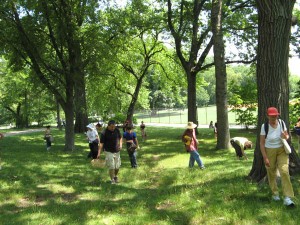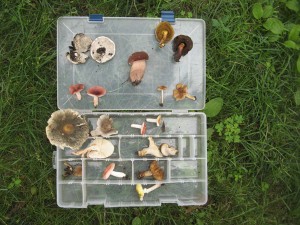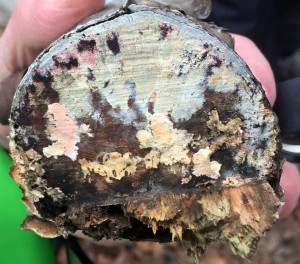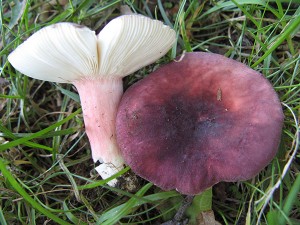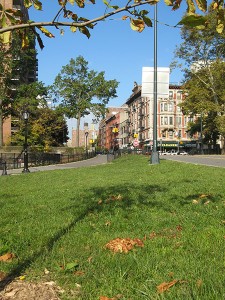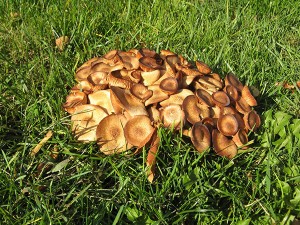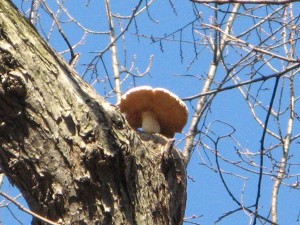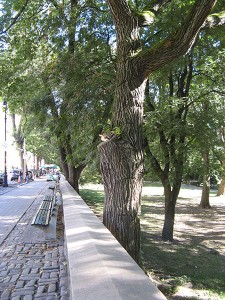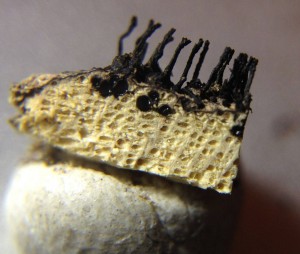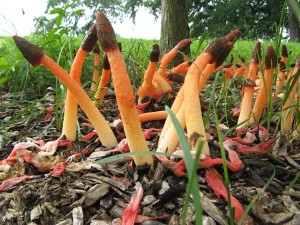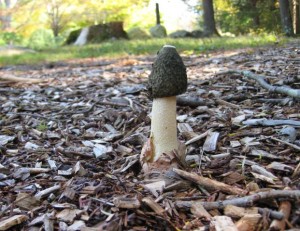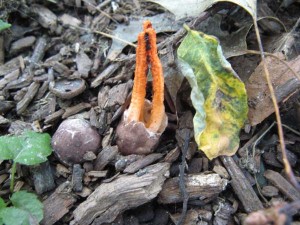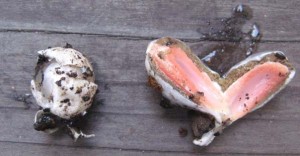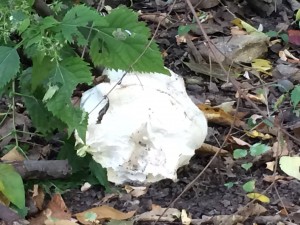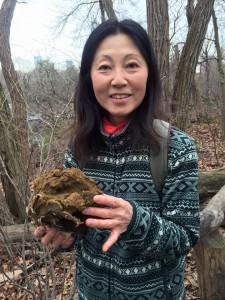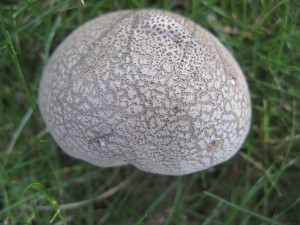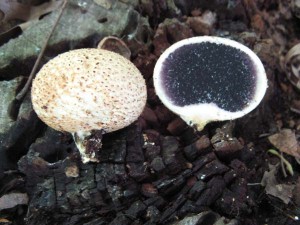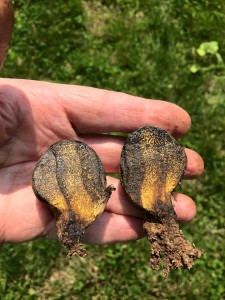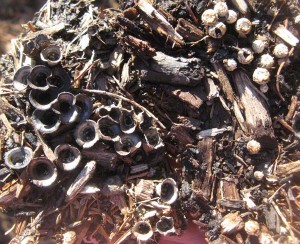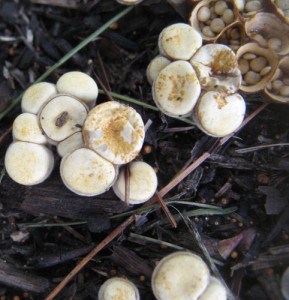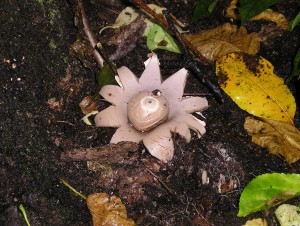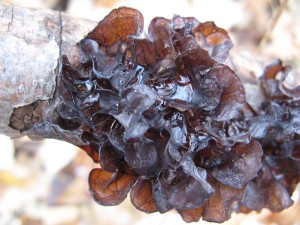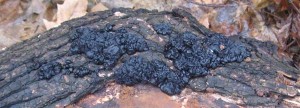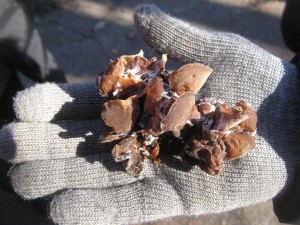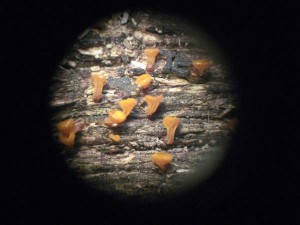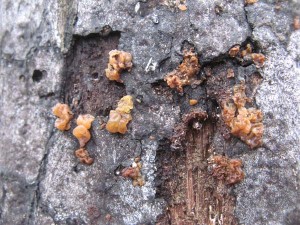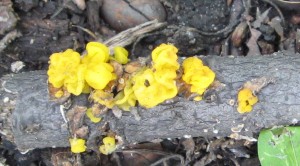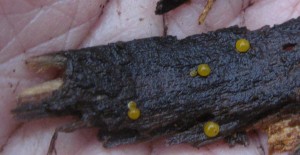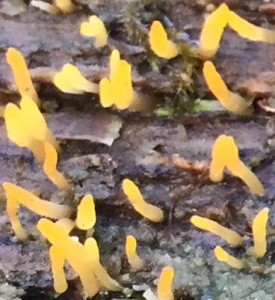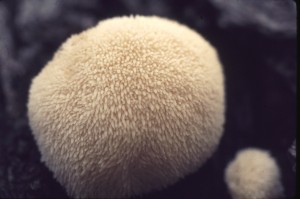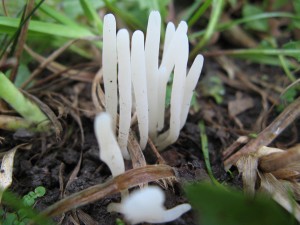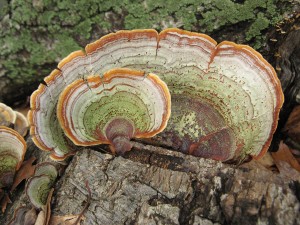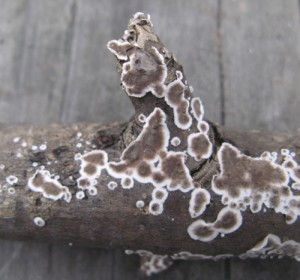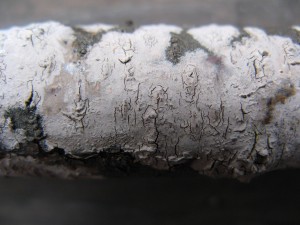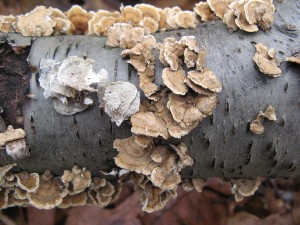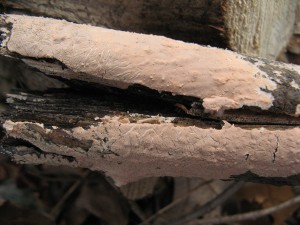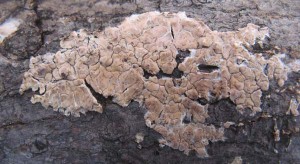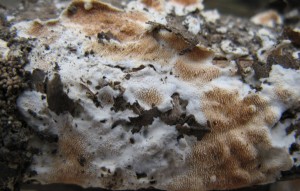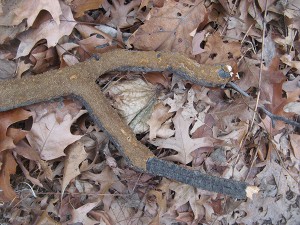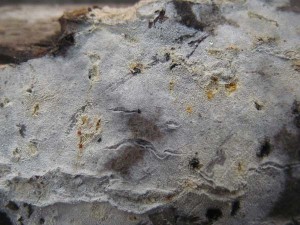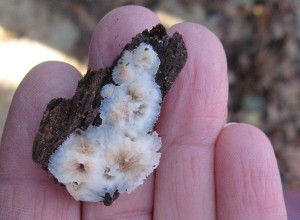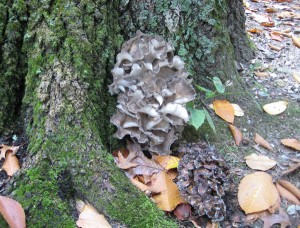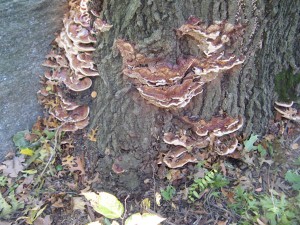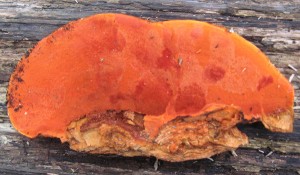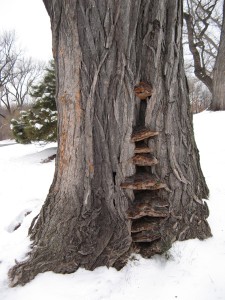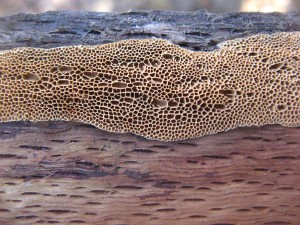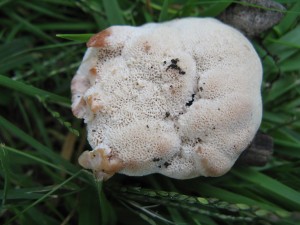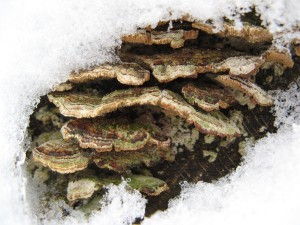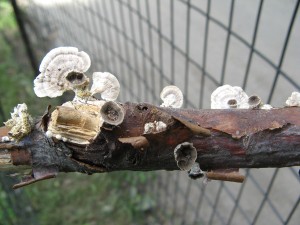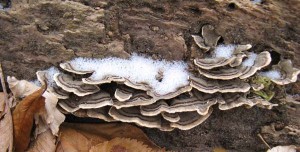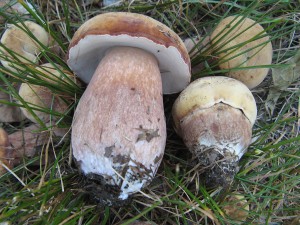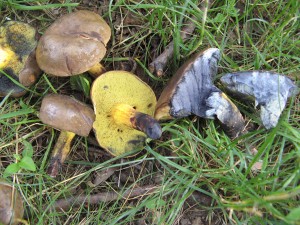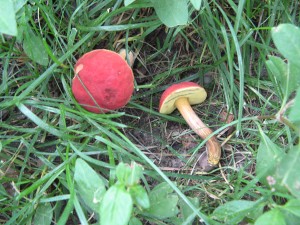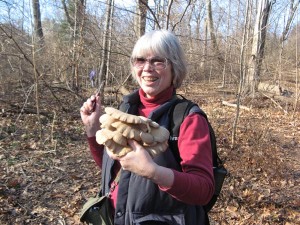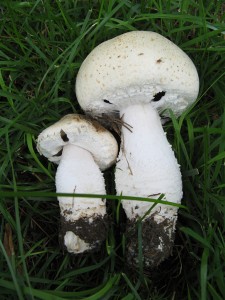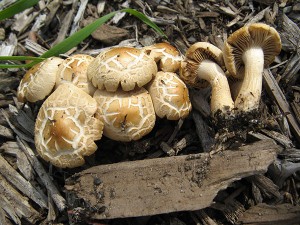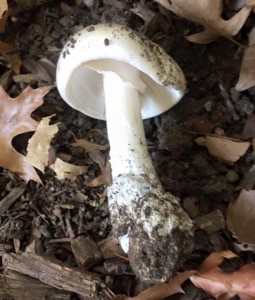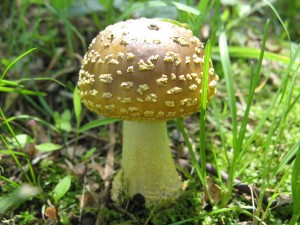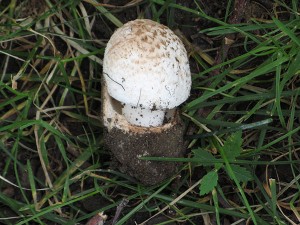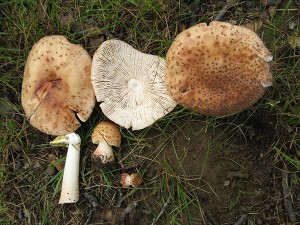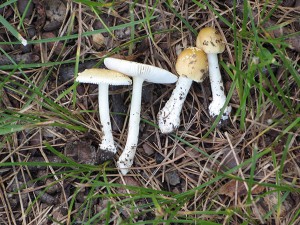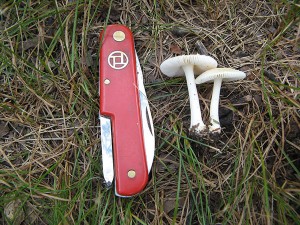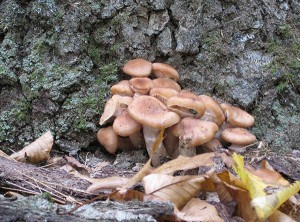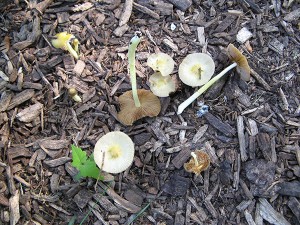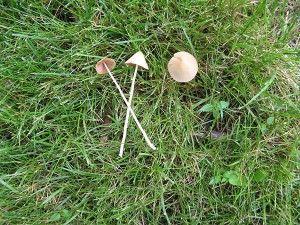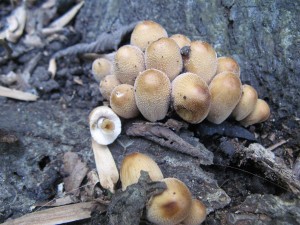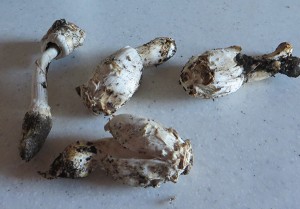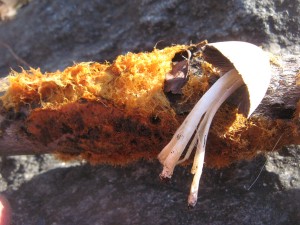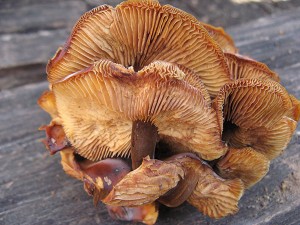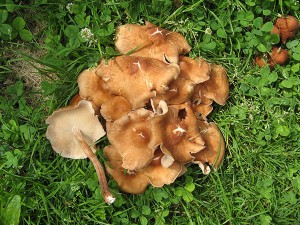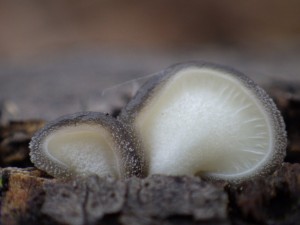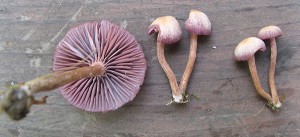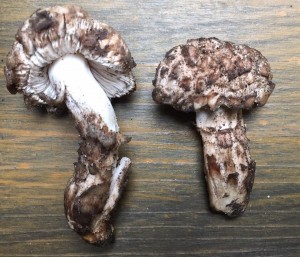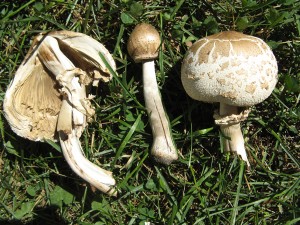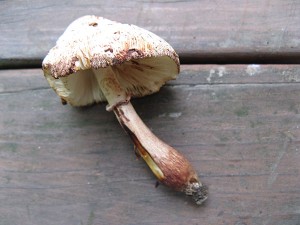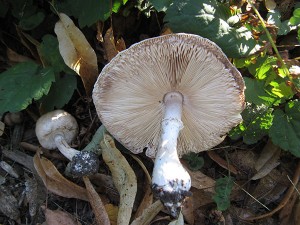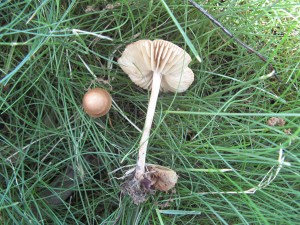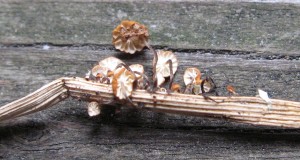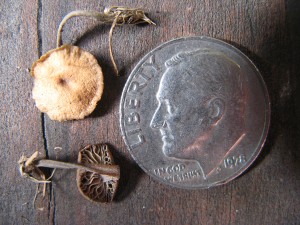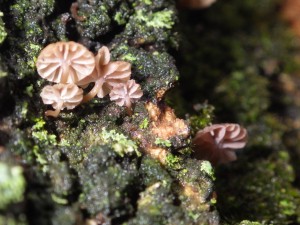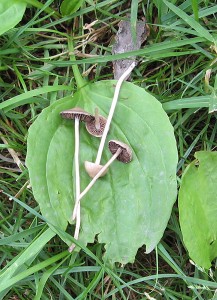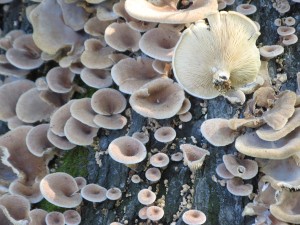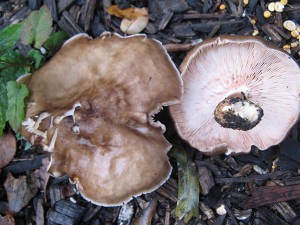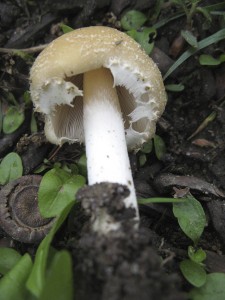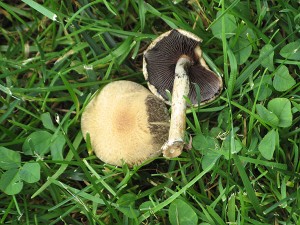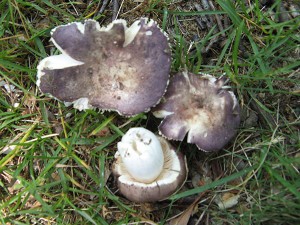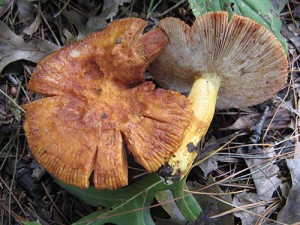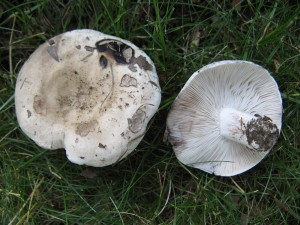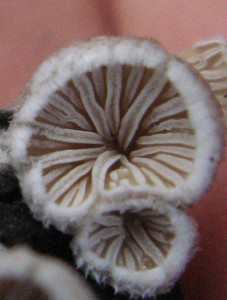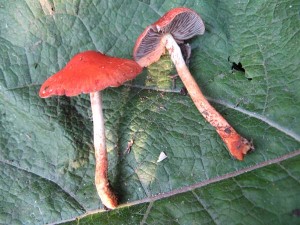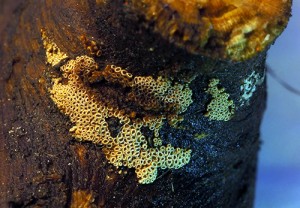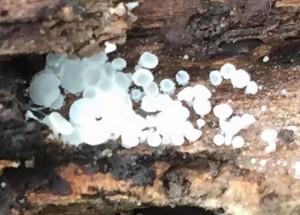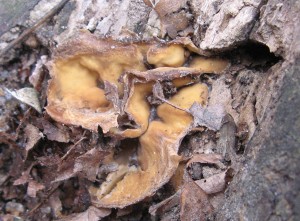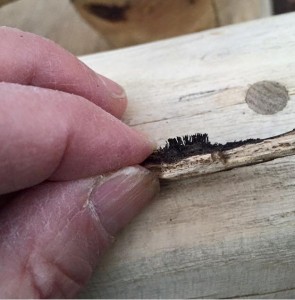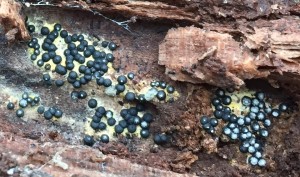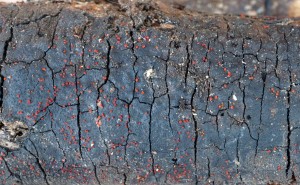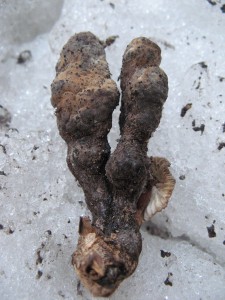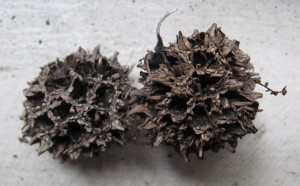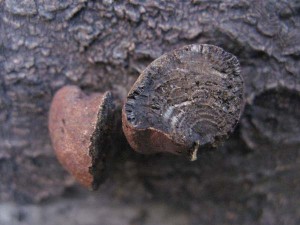THE MUSHROOMS OF CENTRAL PARK
CENTRAL PARK MUSHROOMS………….Below find photos of 100 mushrooms found and photographed in Central Park. This represents about one quarter of all the mushrooms we’ve seen in the park the past few years. [For descriptions and more information about most of these mushrooms please see The Audubon Society Field Guide to North American Mushrooms. For those mushrooms in Central Park not covered in the Audubon Guide, descriptions and discussions will be included below, as time permits.]
There are more than 400 different kinds of mushrooms known to occur in Central Park, many more than the kinds of trees in the park. Some of the more arresting of these mushrooms are presented here. Central Park is not a natural woodland; it is a work of landscape architecture. It was cleared in the late 1850′s, and molded to reflect the artistic vision of its day, that of a naturalistic landscape. It was planted according to a design, and although it has changed over the years, its essential features remain the same. No mushrooms were intentionally introduced into the park, which is why a systematic survey of the mushrooms of Central Park can show us what has come in since its creation.
Central Park’s 800 acres includes about 25,000 trees, more than 3000 of which are oaks. Some of the mushrooms that appear in the park occur on many of these trees, some as parasites, some as just decomposers of dead matter. There are also mushrooms that occur in the wood chip mulch used about plantings to suppress weed growth. In addition, there are mushrooms that occur in lawns and grassy areas. A number of mushrooms are known to be mycorrhizal with a number of park trees, that is, the mushrooms appear on the ground but their filaments are connected to plant roots, and are symbiotic with these plants, getting sugars (photosynthates) from them in exchange for needed nutrients in the soil.
Mushrooms can be found any time of year in the park. An average survey in late June can produce over a hundred different mushrooms. A survey taken in January can easily turn up 50 or more mushrooms, all but a few different from those found in early summer. Although the conspicuous mushrooms in the park have mostly been seen over the years, there are more mushrooms that go unseen than observed. Over winter, for example, it is hard to pick up a stick and not find it festooned with fungi, some quite tiny, and many barely peaking through the innumerable cracks in the bark. Altogether, there could be well over a thousand different mushrooms in Central Park. Using DNA techniques, soil samples in the park have revealed evidence of thousands of fungi whose fruiting bodies have never been seen in the park. For example, two true truffles have been detected in soil samples of the park, but no one has ever found a truffle in Central Park.
Our mushroom survey of Central Park the past several years has resulted in our identifying about 50 Ascomycetes, 100 Crust Fungi and Polypores, 150 Gilled Mushrooms and Boletes, and 50 Puffballs, Jelly Fungi, Coral and Tooth Fungi, and Myxomycetes. In addition, 25 lichens have been identified in the park. There are many more to be found, as our continuing survey will reveal……
Central Park, for all its artifice and intensive management, as well as use by millions of people, is as wild and unknown as any spot on earth: Central Park is the terra incognita before our very eyes, under our feet, beyond our ken.
While very few stinkhorns occur in the park, these are often quite conspicuous, even breath-taking, and nobody fails to notice them, whether by their appearance or by their smell.
Phallus rubicundus…..in mulch under a white oak on the north side of the Reservoir
Phallus ravenelii…..in mulch under a beech just inside the park at 97th and 5th
Pseudocolus fusiformis…..in mulch near the fountain just north of the Delacorte Theater
The “egg” stage of Mutinus elegans…..in mulch near the Meer
PUFFBALLS……
While there could be many more puffballs in the park, only a handful have been identified to species.
Calvatia rubroflava (a rare bright yellow puffball so far seen no where else in New York City)….97th St. near the Recreation Center
Lycoperdon curtisii…..96th St. near CPW
Calvatia gigantea (Giant Puffball) – Ramble [Photo by Kana Kubota]
and old Giant Puffball held by Kana Kubota (12/26/15)
Calvatia sp……97th St. opposite the Recreation Center
Lycoperdon pyriforme (the common late fall and winter puffball on wood)…..106th St. and CPW near top of hill
Scleroderma citrinum (Pigskin False Puffball)…..84th St. under oaks near Bridle Path
Pisolithus tinctorius (Dyer’s Puffball)………..North Woods, west side
BIRD’S NEST FUNGI and EARTHSTARS…..
Only a few bird’s nest fungi and earthstars have been spotted in the park.
Cyathus olla…..near west end of the Meer in mulch
Crucibulum laeve…..97th St. near Tennis Courts in mulch
Geastrum saccatum
JELLY FUNGI.….
Only about a half dozen different jelly fungi have been found so far in the park.
Exidia recisa…..in the Ravine
Exidia glandulosa…..in the North Woods
Auricularia americana (auricula)…..in the North Woods
Guepiniopsis buccina…..in the Ravine
Myxarium nucleatum…..in the North Woods
Tremella aurantia (mesenterica)…..in the Ramble
Dacrymyces capitatus….in the North Woods
Calocera cornea…..in the Ravine
————————————————————
CORAL and TOOTH FUNGI.….
Only a relative handful of these fungi have been found in the park.
Hericium erinaceus…..near 88th St. and CPW
Clavaria fragilis (vermicularis)…..near 98th and the Ballfields on the west side of the park
Clavulina sp……near 98th and the Ballfields on the west side of the park
————————————————————-
CRUST and PARCHMENT FUNGI.……
About 50 species of these fungi have been recognized in the park. There could easily be three times as many that we are as yet unable to identify.
Stereum ostrea…..in the Ravine
Stereum sp……in the Ravine
Peniophora albobadia…..in the North Woods
Peniophora cinerea…..in the North Woods
Plicaturopsis crispa…..in the Ravine
Corticium roseum…..in the North Woods
Cylindrobasidium laeve…..in the Ravine
Sarcodontia setosa…..in the North Woods
Steccherinum ochraceum…..in the North Woods
Hydnochaete olivaceum…..in the North Woods
Athelia epiphylla…..in the North Woods
Phlebia radiata…..in the North Woods
Phlebia sp……in the North Woods
————————————————————
POLYPORES…..
About 50 species have been identified so far. There could be another 50 species that have so far eluded us.
Laetiporus sulphureus (Chicken Mushroom)…..near 98th & 5th Ave. [photo by Jim Richards]
Grifola frondosa (Hen of the Woods, Maitake)…..West Side
Ganoderma resinaceum (lucidum) (Reishi)…..Central Park Pool area
Ganoderma curtisii…..96th & CPW
Pycnoporus cinnabarinus (Cinnabar Polypore)…..in the North Woods
Phellinus gilvus…..in the Ravine
Phellinus robiniae (P. rimosus)…..Near the wood-chipping area, 100th & East Drive
Antrodia malicola…..in the Ravine
Abortiporus biennis…..West Side, 88th St.
Trichaptum biforme…..in the Ravine
Trametes conchifer…..near the Ballfields, 102nd St.
Trametes versicolor (Turkey-tail)…..in the North Woods
————————————————————
BOLETES…..
only a dozen species have been found so far in the park. Elsewhere in NYC there are several dozen other boletes, and more than 100 different ones in the woods north and west of the city. Lacking large stands of conifers is one of the reasons why so few boletes occur here.
Tylopilus badiceps (ferrugineus)…..near the Delacorte Theater
Boletus subvelutipes…..near the Delacorte Theater
Boletus pulverulentus…..near the Ballfields, west 98th St.
Boletus campestris…..97th St. west of West Drive
Boletus rufomaculatus…..98th St. east of West Drive
Boletus chrysenteron…..98th St. east of West Drive
Gyroporus castaneus…..98th St. east of West Drive
————————————————————-
GILLED MUSHROOMS…..
about 150 species have been identified so far, and that is because they are mostly large, conspicuous, colorful mushrooms. There could be as many more tiny ones that no one has yet noticed.
Pleurotus ostreatus (Oyster Mushroom)…..in the Ravine
Hypsizygus ulmarius (Elm Oyster Mushroom)…..in the Ravine
Agaricus bitorquis (Spring Agaricus)…..95th and CPW
Agaricus campestris (Meadow Mushroom)…..98th near the Ballfields
Agaricus “crocodilinus” – Horse Mushroom complex…..93rd west of West Drive under white pine
Agroccybe dura complex…..98th St. east of West Drive
Amanita virosa complex (Destroying Angel)…..near the Conservatory Water (72nd St.)
Amanita flavorubescens (flavorubens)…..98th east of West Drive
Amanita volvata…..100th St. east of West Drive
Amanita vaginata…..94th St. west of West Drive
Amanita rubescens (the Blusher)…..100th St. east of West Drive
Amanita crenulata…..97th St. crosswalk area
Amanita russuloides ?…..97th St. crosswalk area
Armillaria melee complex (Honey Mushroom)
Armillaria tabescens (Ringless Honey Mushroom)
Bolbitius vitellinus
Conocybe lactea (White Dunce Cap)
Coprinus micaceus (Mica Inky Cap)
Shaggy Mane (Coprinus comatus) – photo by Vicky Tartter
Coprinus radians (Orange Ozonium Inky Cap)
Coprinus plicatilus (Parasola) (Japanese Umbrella Inky Cap)
Coprinus quadrifidus (C. variegatus) (Scaly Inky Cap)
Flammulina velutipes (wild Enoki mushroom)
Gymnopilus spectabilis complex (Big Laughing Gym)
Gymnopus luxurians
Hohenbuehelia mastrucatus [photo by Hiromi]
Hypholoma sublateritium (H. lateritium) (Bricktops)
Laccaria amethystina
Laccaria ohiensis
Lentinus (Neolenitnus) lepideus
Chlorophyllum molybdites (Green-spored Lepiota) – very poisonous!
Lepiota americana (Leucoagaricus) (Red-staining Lepiota)
Lepiota naucina (Leucoagaricus leucothites)
Leucocoprinus cepaestipes (Onion-stemmed Lepiota)
Lyophyllum decastes (Fried Chicken Mushroom)
Marasmius scorodonius (the garlic marasmus)
Marasmius oreades (Fairy Ring Mushroom)
Marasmius graminum
Marasmius sp.
Mycena corticola [photo by Hiromi]…..in the North Woods
Panaeolina foenisecii (Lawn Mower’s Mushroom)
Panus rudis
Pluteus cervinus (The Fawn Mushroom)
Psathyrella candolleana
Psathyrella velutina
Psilocybe ovoideocystidiata (magic mushroom)
Rickenella fibula
Russula mariae
Russula ornaticeps
Russula mutabilis
Russula albonigra (The Blackening Russula)
Russula crustosa complex
Schizophyllum commune
Stropharia rugosoannulata (Wine Cap)
Leratiomyces ceres (Stropharia aurantiaca)
————————————————————
CYPHELOID FUNGI
Merismodes fasciculatus [photo by Tom Bigelow]…..in the Ramble
————————————————————-
ASCOMYCETES.….
about 50 species have been identified so far, but there are likely ten times this many ascomycetes in the park.
For convenience in the field, we’ll divide these into two groups: the Cup Fungi (“Discomycetes”) and the Flask (or Carbon) Fungi (“Pyrenomycetes”)
Cup Fungi (“Discomycetes”)
Ascocoryne cylichnium…..in the Ravine
Bisporella citrina…..in the Ravine
Dasyscyphus virgineus…..in the Ravine
Mollisia sp……in the Ravine
Peziza sp. – in the Ravine
———-
Flask (or Carbon) Fungi (“Pyrenomycetes”)
Eutypella scoparia……in the Ramble
Eutypella scoria held to show size
Rosellinia subiculata…..in the Ramble
Neonectria coccinea (on European beech) (Coral Spot)…..97th St. west of East Drive
Cosmospora sp. on Diatripe stigma [photo by Tom Bigelow]
Xylaria polymorpha (Dead Man’s Fingers)…..in the North Woods
Xylaria liquidambar…..in the Ravine
Daldinia childiae (concentrica) [Cramp Balls]…..in the North Woods
Annuohypoxylon multiforme…..in the Ravine
Apiosporina morbosa (Black Knot of Cherry)…..in the Ravine
Phaeocalicium polypraeum (Fairy Pins) [Invariably on the algal layer on the cap surface of the polypore Trichaptum biforme] (in the Ravine)
A 2006 study of the mushroom of Central Park:
http://nemf.org/files/lincoff/centralpark/index.htm


